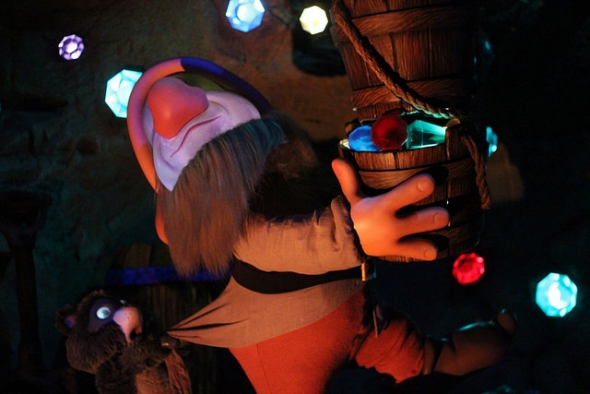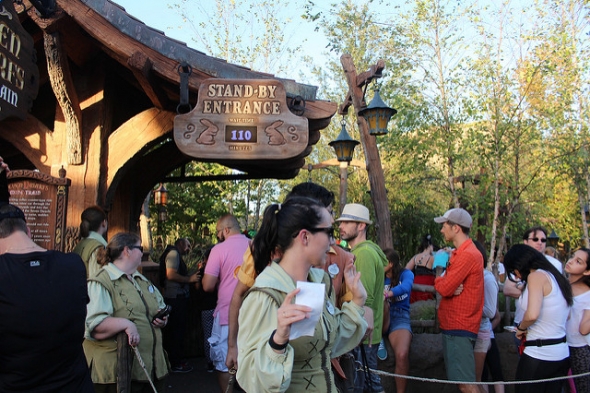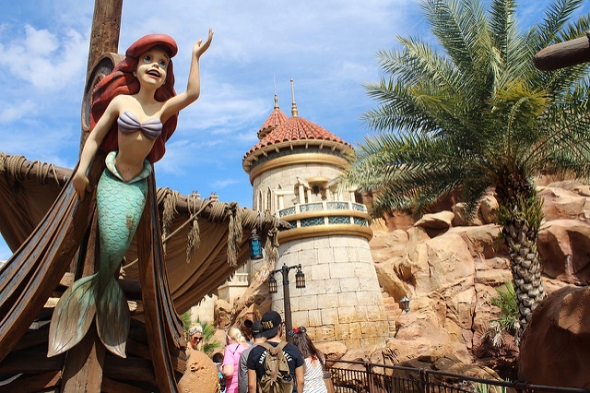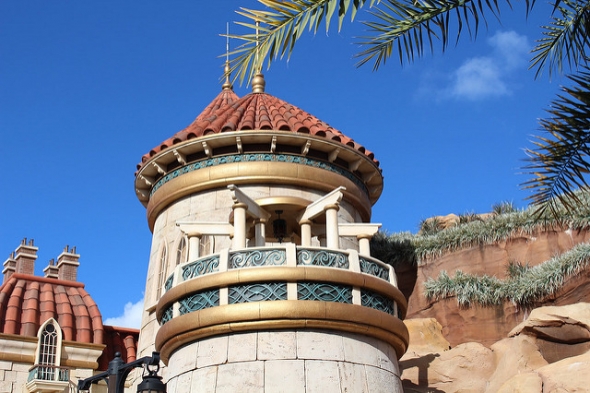Heigh hoooooooooooo!
By saving money and gaining back space, Disney opened up another option, one that would come to fruition. Before that could happen, however, they had to make some hard choices. One of those was to eliminate a staple of theme park lore. Snow White’s Scary Adventure’s wasn’t drawing guests the way that it once had, and park numbers crunchers believed that most of its traffic stemmed from overcrowding inasmuch as any lingering appeal for the ride. They felt virtually anything would at least match the throughput of Snow White’s Scary Adventure, possibly even dwarf it. And that thought process in combination with the newly available real estate and money led to a new addition.
You know the ride as Seven Dwarfs Mine Train. It’s the only new roller coaster at Magic Kingdom in the 21st century and really the first real (i.e. not made for children) one since the 1970s. And this ride's creation was such a big deal that Disney predicated the entire 2014 marketing campaign on its arrival. They used some of the new space from the New Fantasyland expansion, a part of which came from Snow White’s Scary Adventure.
Judging by throughput, their choice was the right one. Seven Dwarfs Mine Train consistently has the longest wait-time of any Magic Kingdom attraction. Guests who don’t get a FastPass generally wait in excess of an hour. 100 minutes isn’t that unusual. It’s constantly packed, and its FastPass allotment generally sells out weeks in advance.
Seven Dwarfs Mine Train also hides a secret in plain sight. Many of the Audio-Animatronics are technologically improved versions of the models from Snow White’s Scary Adventure. While the attraction no longer exists, its spare parts continue on in a much more popular attraction. So, Seven Dwarfs Mine Train uses some of the same space and moving parts as its Fantasyland predecessor. In that way, the ride Disney hadn’t even planned when they announced the expansion at D23 2009 became the spiritual (and physical) successor to the 1955/1971 ride.
How did the plan to fight Harry Potter with an expanded new themed land work out for Disney? Analytically, $425 million isn’t a lot of money by Disney standards. The trifecta of Test Track, Ratatouille: The Adventure, and Pooh’s Hunny Hunt cost more than that. What did Disney get for their money? Well, the comparison isn’t apples to oranges, but Magic Kingdom’s 2009 attendance total was 17.233 million. In 2012, that number had flatlined at 17.536 million. That’s less than two percent growth over three years!
New Fantasyland didn’t open to the public until December of 2012. The following year, Magic Kingdom attendance increased by more than a million theme park tourists. From 2012 to 2015, that total was more than 3.2 million, an average of more than 800,000 new guests each year. Whether all of that growth is attributable to New Fantasyland is up for debate. What can’t be ignored is that Disney built the 2014 marketing campaign around the expansion. Since then, the park has experienced explosive growth. Even the most critical person would have a hard time (successfully) arguing that New Fantasyland has been anything but a huge positive for Magic Kingdom and Walt Disney World as a whole.
That’s important because we know that other parts of the Orlando campus are currently in transition. What we can take from the turning point of the Fantasyland reboot is that Disney fans oftentimes lament change when it happens. Casual vacationers, on the other hand, pay more attention to the park and visit more when it has new and exciting additions.
Yes, the losses of Snow White’s Scary Adventure and Mickey’s Toontown Fair are regrettable. One of the wonderful parts of Disney is that how you remember it from your childhood is how you want to think of it as an adult. Park planners take this into consideration when they contemplate huge changes. They don’t act impulsively, though.
We can see with New Fantasyland that they had a viable business strategy in place with a land of princesses. Even when they received pushback on that tactic and recognized the miscalculation with the premise, they still found a way to improve a 40-year-old themed land. They did so in a manner that has improved the overall perception of the most popular theme park in the world. New Fantasyland might not have the showy reputation of the Wizarding World of Harry Potter, but it still boosted attendance, the only real goal of any new theme park construction. We should expect the same to be true of the upcoming Walt Disney World expansions. Change isn’t good per se at a timeless place like a Disney theme park, but it’s necessary to honor Walt Disney’s dream of a constantly improving family paradise.





Comments
I think they did a great job with new fantasyland. Considering how much they were able to do they got a pretty good barrgain. The article fails to mention another big positive of the expansion and that is finally getting rid of the old vestigial parts that were more or less eye sores and painful reminders of Magic Kingdom past namely 20,000 leagues and the old skyway station. Seeing something new in the place of a beloved old attraction is much easier than seeing something just hanging out there without a purpose. *cough* Epcot *cough*